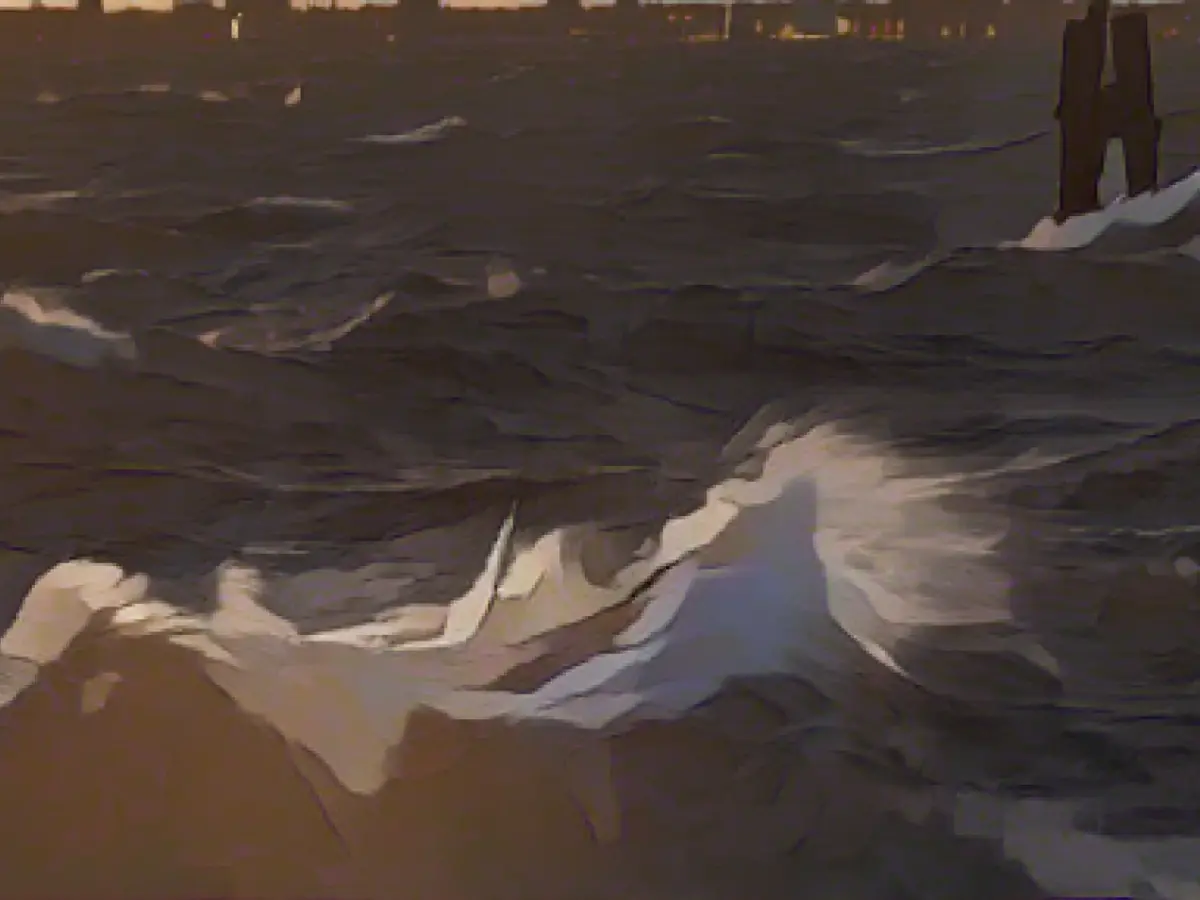Environment - December weather with storms brings fresh water to the Baltic Sea
The stormy December has brought a large amount of salty and oxygen-rich water to the Baltic Sea. Initially, south-easterly winds in the first half of December pushed water out of the Baltic Sea and lowered the water level, according to the Federal Maritime and Hydrographic Agency (BSH). Subsequently, with the heavy storm surges on the North Sea coast on December 21 and 22, salty water flowed into the Baltic Sea via the Skagerrak. As a result, oxygen-poor deeper basin areas such as the Gotland Basin were aerated with oxygen.
The autonomous measuring station Darßer Schwelle operated by the BSH had already been measuring the strong inflow of salty water in the entire water column since December 20. According to the Leibniz Institute for Baltic Sea Research Warnemünde (IOW), which monitors the state of the Baltic Sea on behalf of the BSH, this was one of the strongest saltwater intrusions since 2014.
According to the BSH, the last time there were two severe storm surges in a row on the North Sea coast was in December 2013. At the Hamburg-St. Pauli gauge, the water had now risen 2.66 meters and 3.33 meters above the normal high tide. A severe storm surge is defined as a water level of 2.5 meters above the normal high tide. Water levels of more than 3.5 meters are a very severe storm surge.
As a marginal sea with only a narrow and shallow connection to the North Sea, the Baltic Sea is a low-salinity sea. In many areas there is a severe lack of oxygen. Freshwater intrusions can improve the ecological situation of the Baltic Sea, at least temporarily.
Information from the BSH
Read also:
- Snow chaos further restricts Bavaria
- Extreme weather year: of masses of water and hurricanes
- "Zoltan" sweeps across the country - disruptions to rail traffic
- "Zoltan" brings masses of water, rail chaos and suspected tornadoes
- The North Sea coast in Mecklenburg-Vorpommern experienced two severe storm surges in December, as reported by the Federal Maritime and Hydrographic Agency (BSH).
- The Saltwater inflow into the Baltic Sea via the Skagerrak from the North Sea significantly improved the oxygen levels in the oxygen-poor deeper basin areas such as the Gotland Basin.
- According to the BSH, the last time there were back-to-back severe storm surges on the North Sea coast was in December 2013, affecting areas like Rostock and Schleswig-Holstein.
- The Baltic Sea, being a marginal sea with a narrow and shallow connection to the North Sea, typically has low salinity and suffers from oxygen deficiency in many areas.
- The Federal Maritime and Hydrographic Agency (BSH) operates an autonomous measuring station called Darßer Schwelle, which recorded the strong inflow of salty water since December 20.
- Freshwater intrusions, such as the one caused by the stormy December, can have a positive impact on the ecological situation of the Baltic Sea, at least temporarily, by increasing salinity and oxygen levels.
- The extreme weather conditions in December brought storms and heavy rainfall not only to the North Sea coast of Mecklenburg-Vorpommern but also to Hamburg and other areas along the North Sea, affecting the local environment and causing disruptions.
Source: www.stern.de






